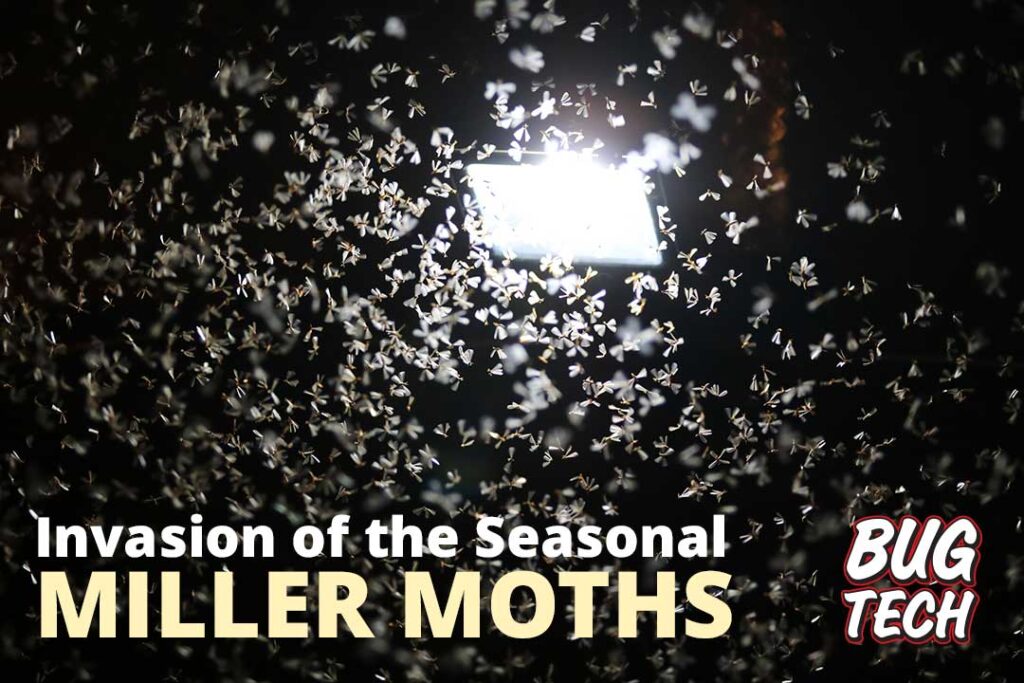Invasion of the Seasonal Miller Moths

Lubbock's Great Month Invasion
It’s not quite Biblical, but this season’s epic, ongoing battle with the month feels like more than a dusty nuisance. Not only do moths outnumber butterflies 9 to 1, but this spring, it feels like they’ve outnumbered us! You will be glad to know that the moths that are accumulating on your porch and are fatally attracted to your lamps and TV screens are just passing through. These migratory squatters are most likely Millers, and Lubbock has been unusually inundated with them.
More than likely, these moths are emerging from overwintering and are traveling from the south.
While these nocturnal nuisances are annoying, they are not at all dangerous to us. There is dust associated with them which is actually scales off their wings when they fly. They prefer to fly at night and seek shelter in the day.
It’s all part of a circle of life: moths lay eggs, which turn into caterpillars, which pupate (think of a cocoon, or chrysalis), then emerge again as moths. This kind of moth outbreak happens commonly enough that Texans, and others around the country, have even given such moths a name.
Millers is a generic name for any moth that becomes abundant in and around homes. In some areas, millers show up in large numbers in the spring, and in others during the fall. Most people consider them a nuisance and commonly worry that they are a precursor to some great plague.
The Millers are usually the army cutworm. The adults that fly in a few weeks will spend some time feeding on plant nectar, and then they will begin their long migration to the Rocky Mountains, where they will spend the summer.
They are attracted to light and often fly around porch lights and other light sources. Miller moths are not harmful to humans, but they can be a nuisance when they enter homes in large numbers. The cause of a miller moth infestation can vary, but it is often related to environmental factors. For example, a warm winter or wet spring can lead to an increase in the number of miller moths. Additionally, the availability of food sources, such as flowering plants and crops, can contribute to a population boom.
So, what can you do to get rid of the moths?
- Seal up your home: Ensure all windows and doors are properly sealed to prevent miller moths from entering your home. You can also use weather stripping or caulk to seal up any cracks or gaps in your walls.
- Turn off outdoor lights: Since miller moths are attracted to light, it's a good idea to turn off outdoor lights or switch to yellow bug lights.
- Use screens: Install screens on windows and doors to keep miller moths out.
- Lavender: Moths are repelled by the scent of lavender. You can place lavender sachets or essential oil on your clothing or in your closet to deter moths.
- Cedar: Cedar wood is also a natural repellent for moths. You can use cedar chips or blocks in your closet or drawers to repel moths.
- Vacuum frequently: Vacuuming can help remove any miller moths entering your home. Be sure to empty the vacuum outside after use.
- Use insecticides: If the infestation is severe, you may want to consider using insecticides. Follow the instructions on the label carefully and use caution around children and pets.
- Hire a professional: If you cannot control the infestation on your own, consider hiring a pest control professional who can help you get rid of the miller moths.
Bug Tech will inspect the affected area and identify the type of moth involved. This will help us develop an effective treatment plan. insecticides can be used to kill adult moths and their larvae. Bug Tech will typically apply the insecticide to areas where moths are known to congregate, such as windows, doorways, and other entry points.
Other treatment options include sticky traps to capture adult moths. These traps contain a sticky substance that the moths become stuck to when they come into contact with it. Vacuuming can also help to remove adult moths and their larvae from the affected area. The technician may use a high-powered vacuum to suction up the moths and larvae.
